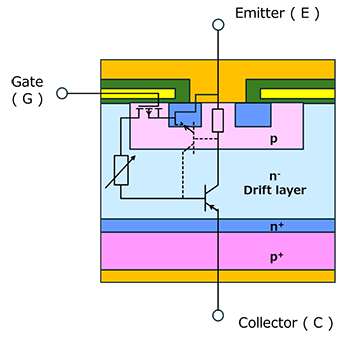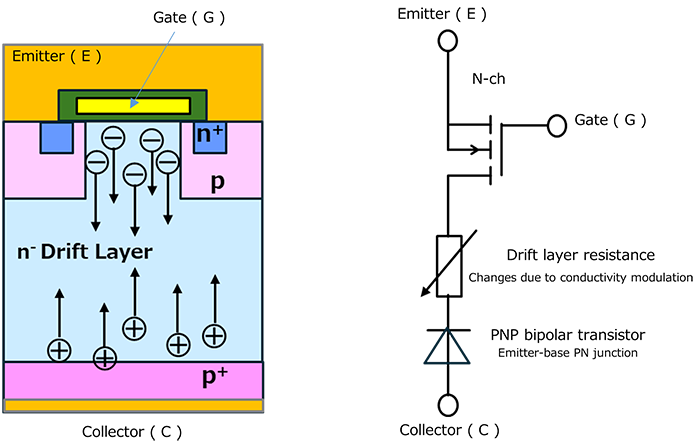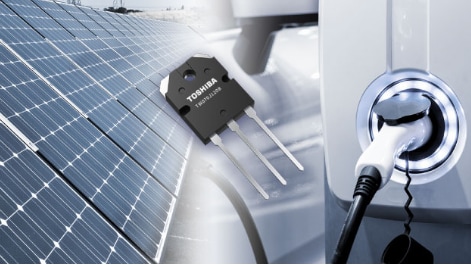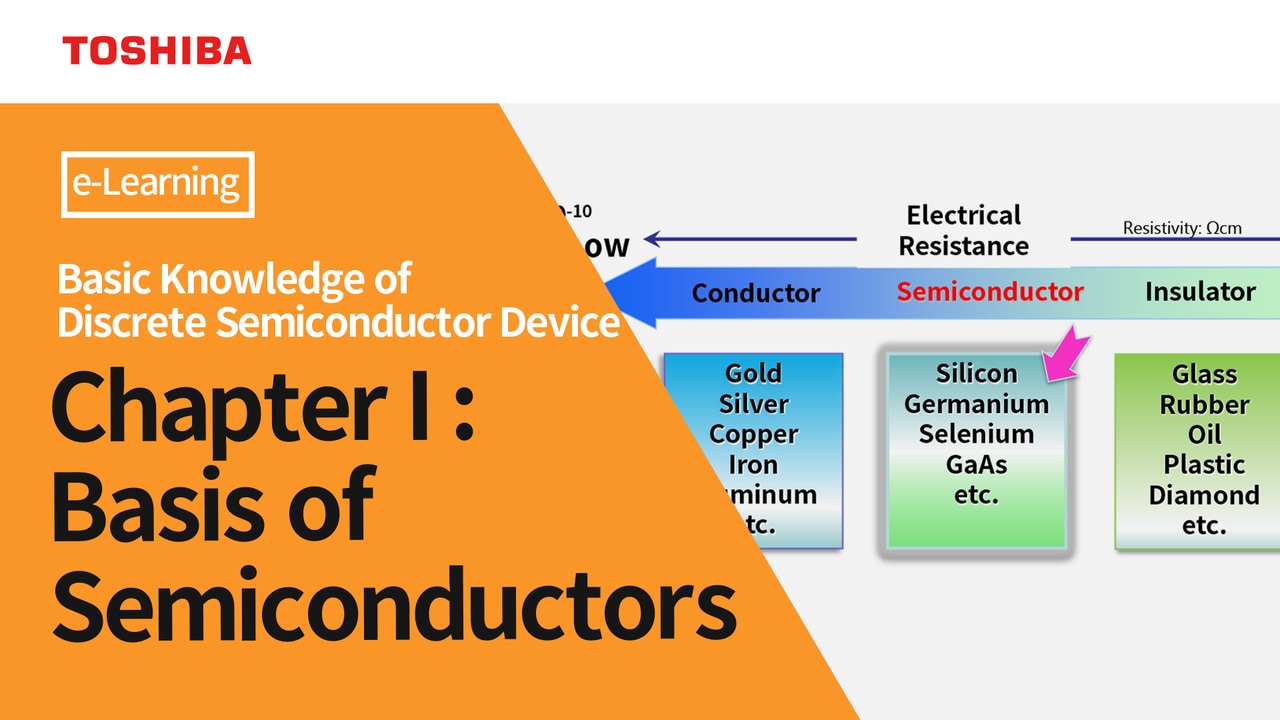- General Top
- SEMICONDUCTOR
- STORAGE
- COMPANY
-
My ToshibaSemicon
- Semiconductor Top
-
ApplicationsAutomotive
Body Electronics
xEV
In-Vehicle Infotainment
Advanced Driver-Assistance Systems (ADAS)
Chassis
IndustrialInfrastructure
BEMS/HEMS
Factory Automation
Commercial Equipment
Consumer/PersonalIoT Equipment
Healthcare
Wearable Device
Mobile
Computer Peripherals
-
ProductsAutomotive Devices
Discrete Semiconductor
Diodes
Transistors
Logic ICs
Analog Devices
Digital Devices
Wireless Devices
※
: Products list (parametric search)
Power SemiconductorsSiC Power Devices
※
: Products list (parametric search)
Isolators/Solid State RelaysPhotocouplers
Digital Isolators
Solid State Relays
Fiber Optic Transmitting Modules
※
: Products list (parametric search)
MOSFETsIGBTs/IEGTsBipolar Transistors※
: Products list (parametric search)
Diodes※
: Products list (parametric search)
MicrocontrollersMotor Driver ICsIntelligent Power ICs※
: Products list (parametric search)
Power Management ICsLinear ICs※
: Products list (parametric search)
General Purpose Logic ICsLinear Image SensorsOther Product ICsOther Product ICs
※
: Products list (parametric search)
-
Design & Development
-
Knowledge
- Where To Buy
- Part Number & Keyword Search
- Cross Reference Search
- Parametric Search
- Stock Check & Purchase
This webpage doesn't work with Internet Explorer. Please use the latest version of Google Chrome, Microsoft Edge, Mozilla Firefox or Safari.
require 3 characters or more. Search for multiple part numbers fromhere.
The information presented in this cross reference is based on TOSHIBA's selection criteria and should be treated as a suggestion only. Please carefully review the latest versions of all relevant information on the TOSHIBA products, including without limitation data sheets and validate all operating parameters of the TOSHIBA products to ensure that the suggested TOSHIBA products are truly compatible with your design and application.Please note that this cross reference is based on TOSHIBA's estimate of compatibility with other manufacturers' products, based on other manufacturers' published data, at the time the data was collected.TOSHIBA is not responsible for any incorrect or incomplete information. Information is subject to change at any time without notice.
require 3 characters or more.
What is an IGBT?
IGBT stands for Insulated Gate Bipolar Transistor and is a device with a MOSFET structure for the input and a bipolar transistor structure for the output. Fig. 1 shows the IGBT symbol, and Fig. 2 shows a simple IGBT equivalent circuit. When a voltage is applied to the gate of an IGBT, the MOSFET part turns on, resulting in a current flowing between the collector and emitter of the IGBT.


The IGBT has a MOSFET structure at the input and a bipolar transistor (BJT) structure at the output. MOSFETs have the advantages of high input impedance and fast switching speed, but the disadvantage is that when the element is made to withstand high voltage, the on-resistance becomes high. On the other hand, BJTs have the advantage of low on-voltage even when made to withstand high voltage, but the disadvantage is low input impedance and slow switching speed. IGBTs are devices that compensate for the disadvantages of each, achieving the characteristics of high input impedance, relatively fast switching speed, and low on-voltage even with high withstand voltage.
As a result, our products are widely used in a variety of applications, from consumer devices such as air conditioners, refrigerators, washing machines, and microwave ovens to industrial devices such as elevators, robots, and machine tools.
Fig. 3 shows the structure of an IGBT. The IGBT has a structure in which a p+ layer is added to the n+ layer on the back side (drain side) of the MOSFET chip to function as a collector. Fig. 1 and 2 show the structure and equivalent circuits of an IGBT and a MOSFET. An important characteristic of an IGBT is conductivity modulation, which MOSFETs do not have. Also, MOSFETs are unipolar devices that use only electrons as carriers, whereas IGBTs are bipolar devices that use both electrons and holes. Fig. 4 shows an equivalent circuit based on the chip structure of an IGBT. The N-channel MOSFET and PNP BJT shown in this equivalent circuit are the basic components of an IGBT. Therefore, MOSFETs are unipolar devices that use only electrons as carriers, whereas IGBTs operate as bipolar devices that use both electrons and holes.



Although it is not shown in the equivalent circuit diagram in Fig. 1, a thyristor is formed by the parasitic NPN BJT and PNP BJT as shown in Fig. 4. For this reason, if the thyristor turns on due to the effect of heat or other factors, the IGBT will latch up, causing a short circuit between the collector and emitter, which can lead to an overcurrent flow and destruction (thermal runaway). In reality, the base-emitter resistance (p-region resistance) of the parasitic NPN BJT is designed to be very small and is close to a short circuit. Therefore, this parasitic NPN BJT does not basically turn on as a transistor, and latch-up does not basically occur in recent IGBTs.
Most of the collector current of an IGBT flows from the emitter of the PNP BJT (the collector of the IGBT) to the base. This current passes through the drift layer (n-) and then passes through the drain and source of the MOSFET to reach the emitter of the IGBT. This is the main path of the current. The resistance of the drift layer, which determines the loss of this main path, is reduced by conductivity modulation.
Conductivity modulation, an important feature of IGBTs, is explained below. Conductivity modulation is a fundamental property common to bipolar devices such as pn junction diodes and BJTs. It does not exist in unipolar devices such as MOSFETs and Schottky barrier diodes (SBDs).
Conductivity modulation is achieved by injecting holes from the p+ layer of the IGBT into the n- layer. This process increases the carrier density, improving the conductivity of the n- layer and, as a result, reducing the on-resistance. Fig. 5 shows the operation of carriers (holes and electrons) in conductivity modulation and the equivalent circuit.
To explain further, when the IGBT is in the on state, holes are injected from the p+ collector layer into the n- layer, and the density of holes in the n- layer exceeds the electrical equilibrium value. To prevent the holes from becoming excessive (to maintain equilibrium), electrons are injected from the n+ layer through the channel into the n- drift layer. This increases the density of majority carriers (electrons) and minority carriers (holes) in the n- drift layer, increasing the conductivity.
To transition an IGBT from on to off, the gate and emitter are shorted or reverse biased. This discharges the gate charge, the channel disappears, and the MOSFET turns off. However, the collector current of the IGBT is not immediately cut off and a current called the "tail current" continues to flow. This current is caused by the excess electrons and holes that remain in the n- layer as conductivity modulation when the IGBT is on. This tail current continues to flow while gradually decaying until the excess carriers (electrons and holes) accumulated in the n-layer when the device is on recombine (recombination time). This phenomenon affects the switching losses in circuits that use IGBTs. It is an important factor to be aware of when using IGBTs.
The following FAQ also provides an explanation of conductivity modulation and tail current. Please refer to it.
Related Links
The following documents also contain related information.
Parametric Search
IGBTs/IEGTs
FAQs
* Company names, product names, and service names used in this FAQ may be of their respective companies.



